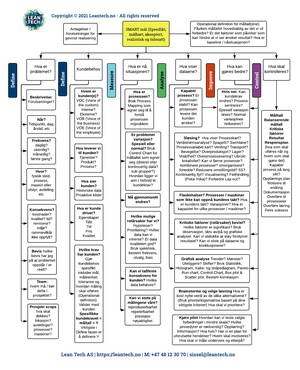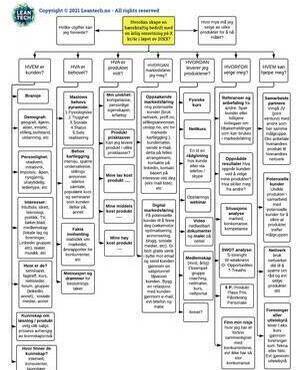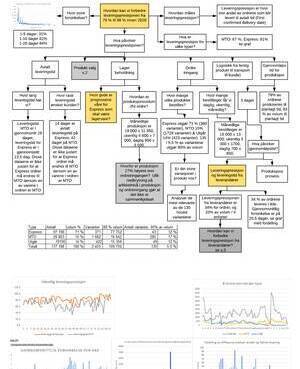
I was very impressed with Sissel's Lean Six Sigma knowledge. She makes it easy to identify improvements and create results.


The road to a goal is rarely straight – but with the right tools, you can find the best route.
Have you ever started a project or pursued a goal with great enthusiasm, only to encounter unexpected challenges along the way?
Maybe you addressed the symptoms instead of the root cause? Perhaps the problem was not well understood? Or maybe the goal was unclear.
Whatever the reason, a Thought Map will help you structure your way to the goal.
Thought Maps are effective tools for structured problem solving and achieving goals. Here are three examples:
Thought Map for DMAIC:

Thought Map (Manage Time):

Thought Map (Delivery):

A Thought Map acts as a guide because it presents multiple possible paths to the goal. Sometimes, you might reach a dead end – but the Thought Map can help you get back on track.
The key to a good Thought Map is to ask many questions, stay open-minded, and explore multiple possibilities.
Choose a challenge you are facing and try it yourself!

The Thought Map model starts with a problem or opportunity based on observations and experiences. From there, hypotheses about possible causes are formed.
To test these hypotheses, facts and data are needed. Data collection and analysis provide the foundation for informed decision-making and necessary adjustments.
Problem-solving is an iterative process, where hypotheses are refined, and new solutions are tested as needed.
The most important thing is to start – don’t strive for perfection. Ask good questions, involve those who understand the challenge, and use facts to find solutions.
Using sticky notes and brown paper can be a great way to brainstorm ideas and encourage collaboration.
Thought Maps are one of the topics covered in the Green Belt course. Learn project management and structured problem-solving techniques to drive improvements and achieve sustainable results.
Lean Tech AS | Kristoffer Robins vei 13
0047 481 23 070
Oslo, Norway
L - Look for solutions
E – Enthusiastic
A – Analytical
N - Never give up